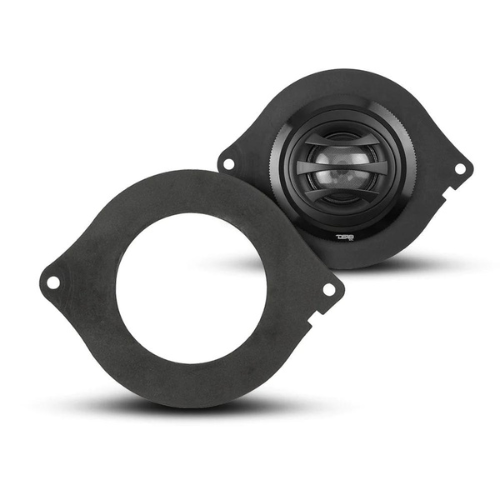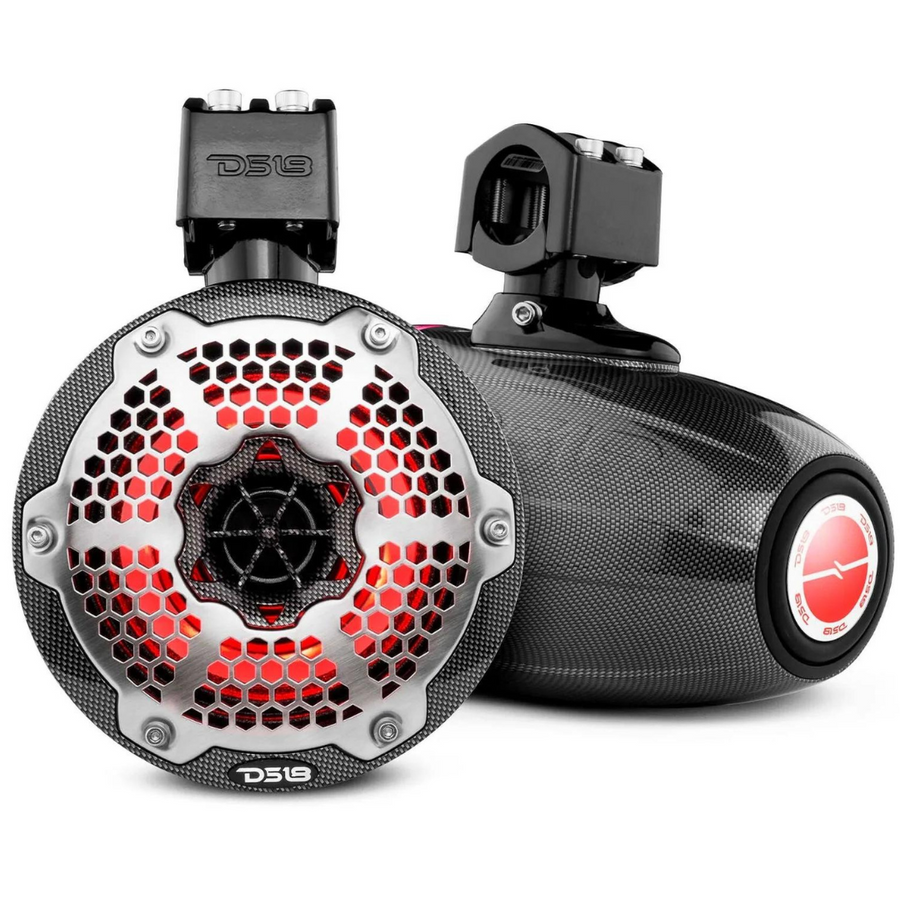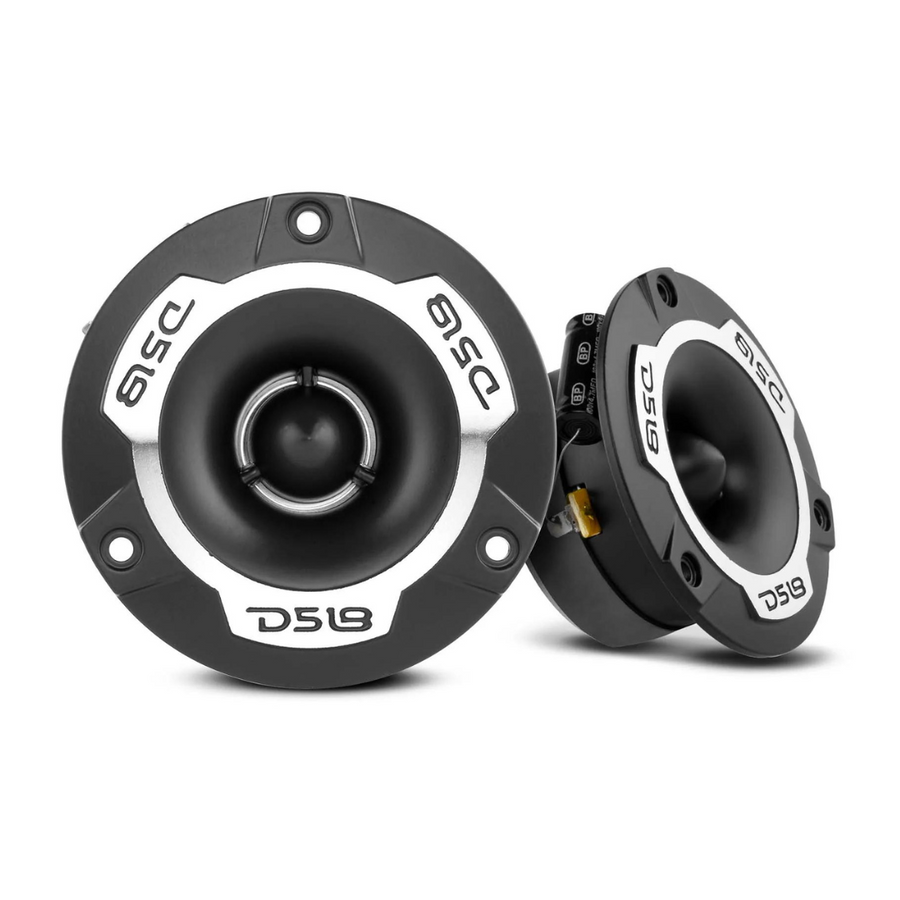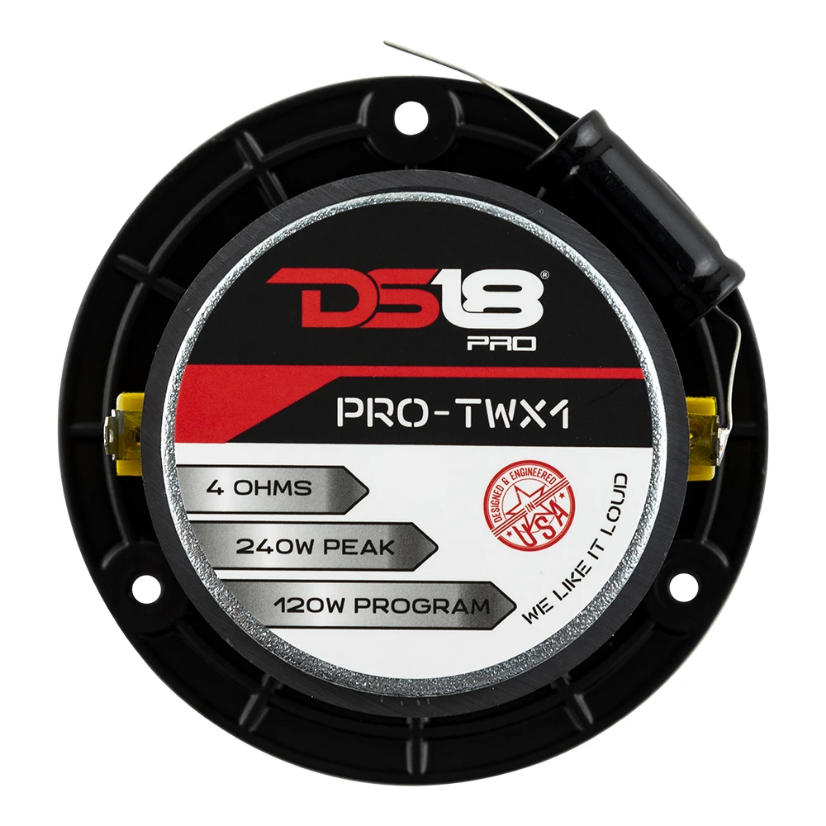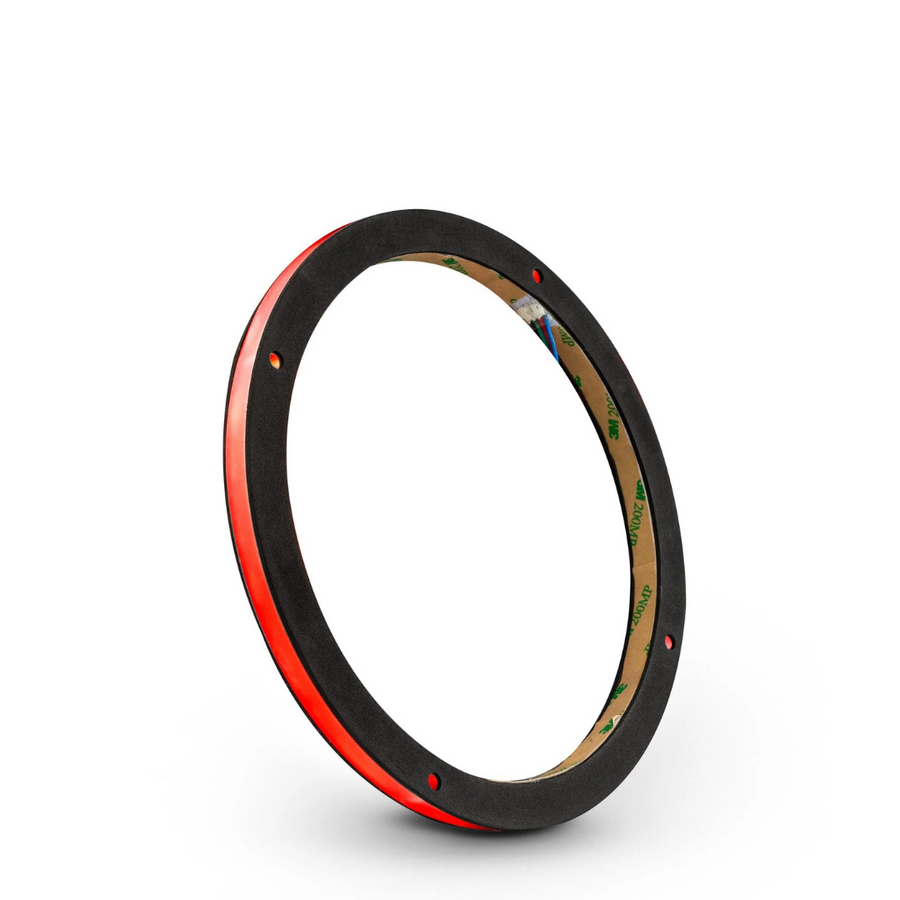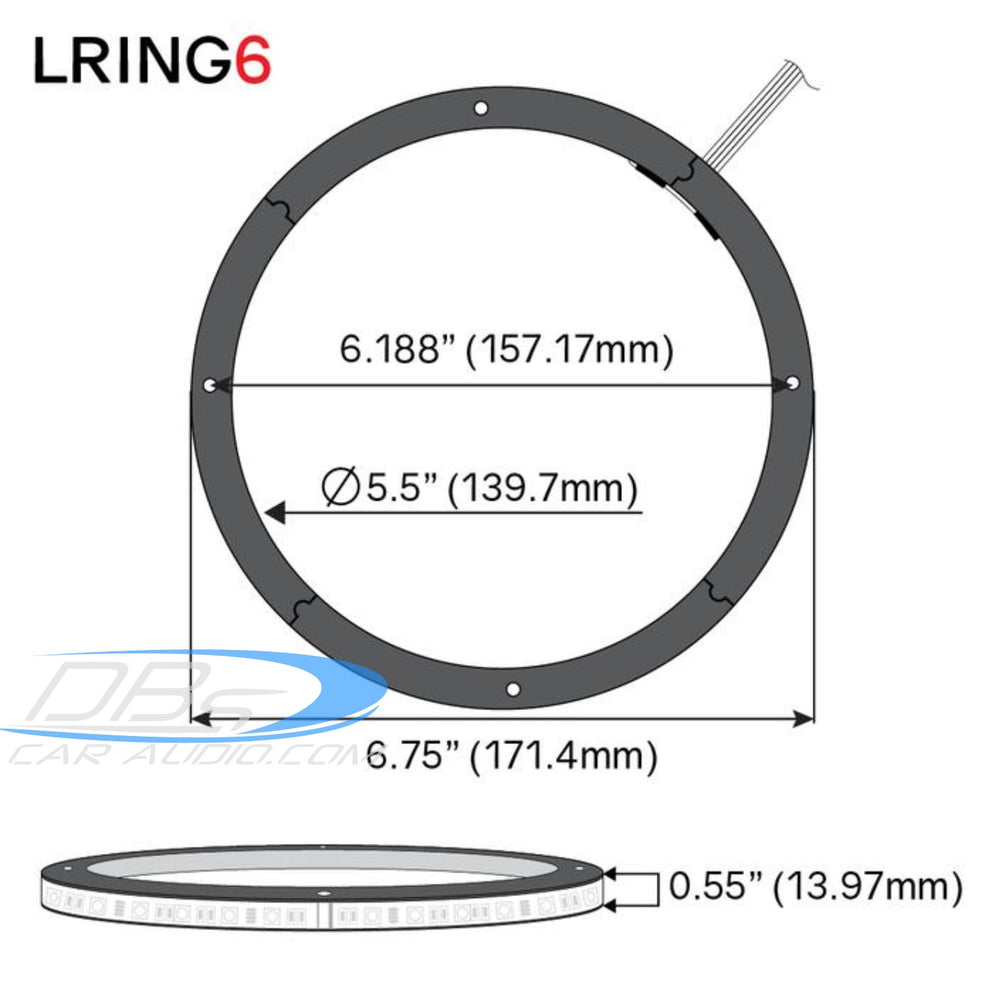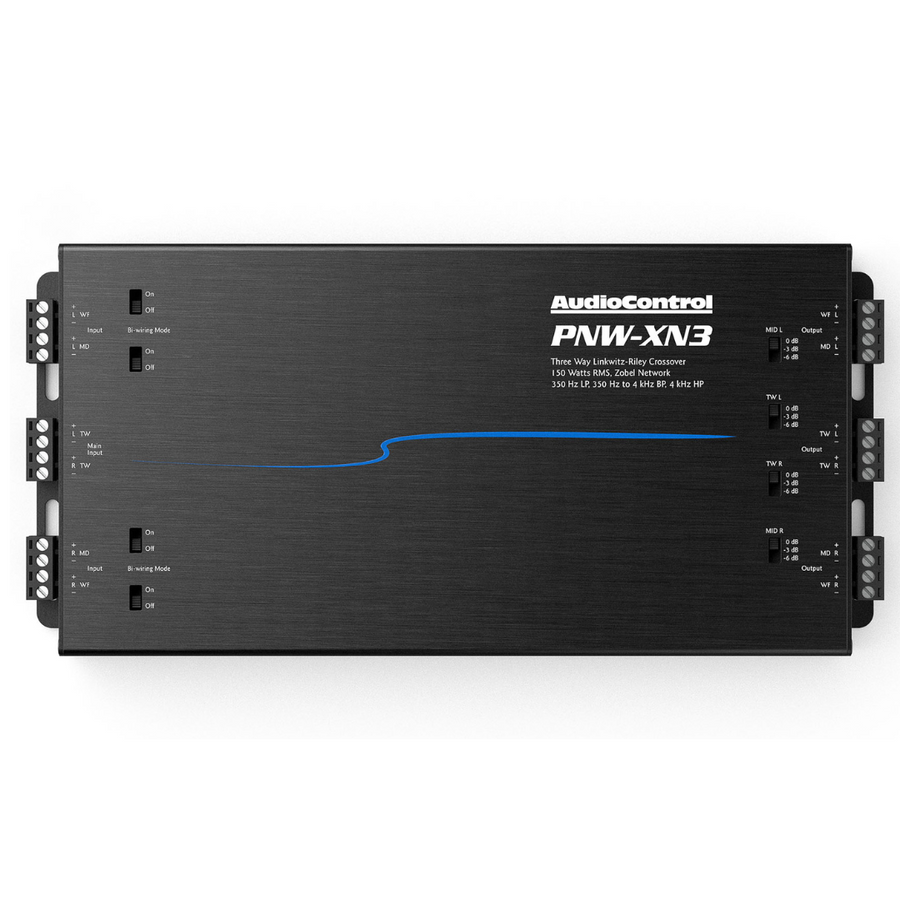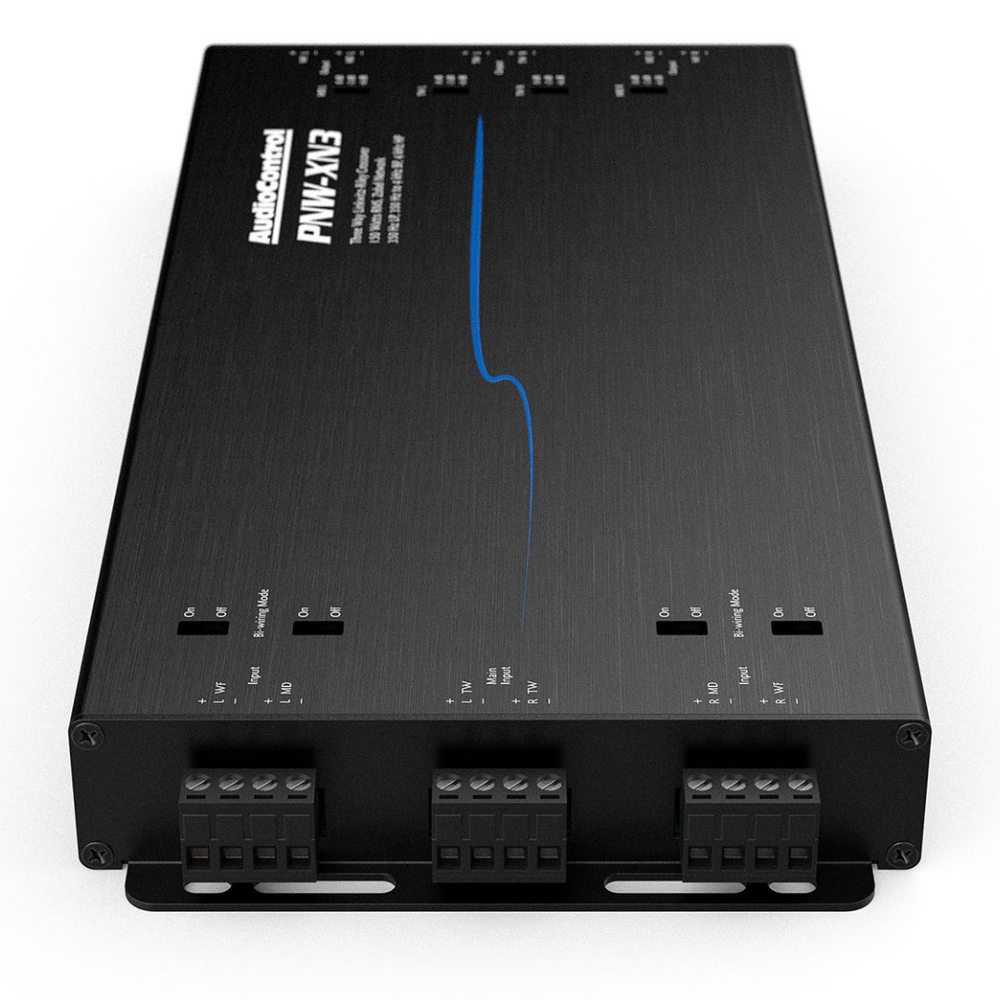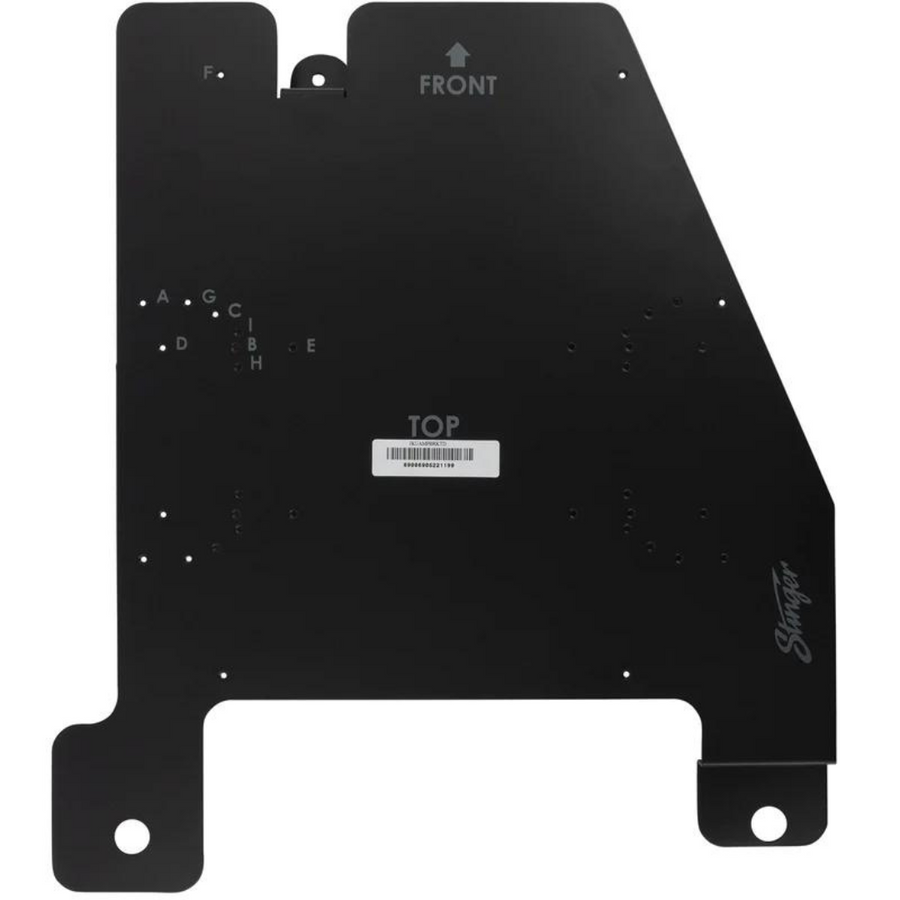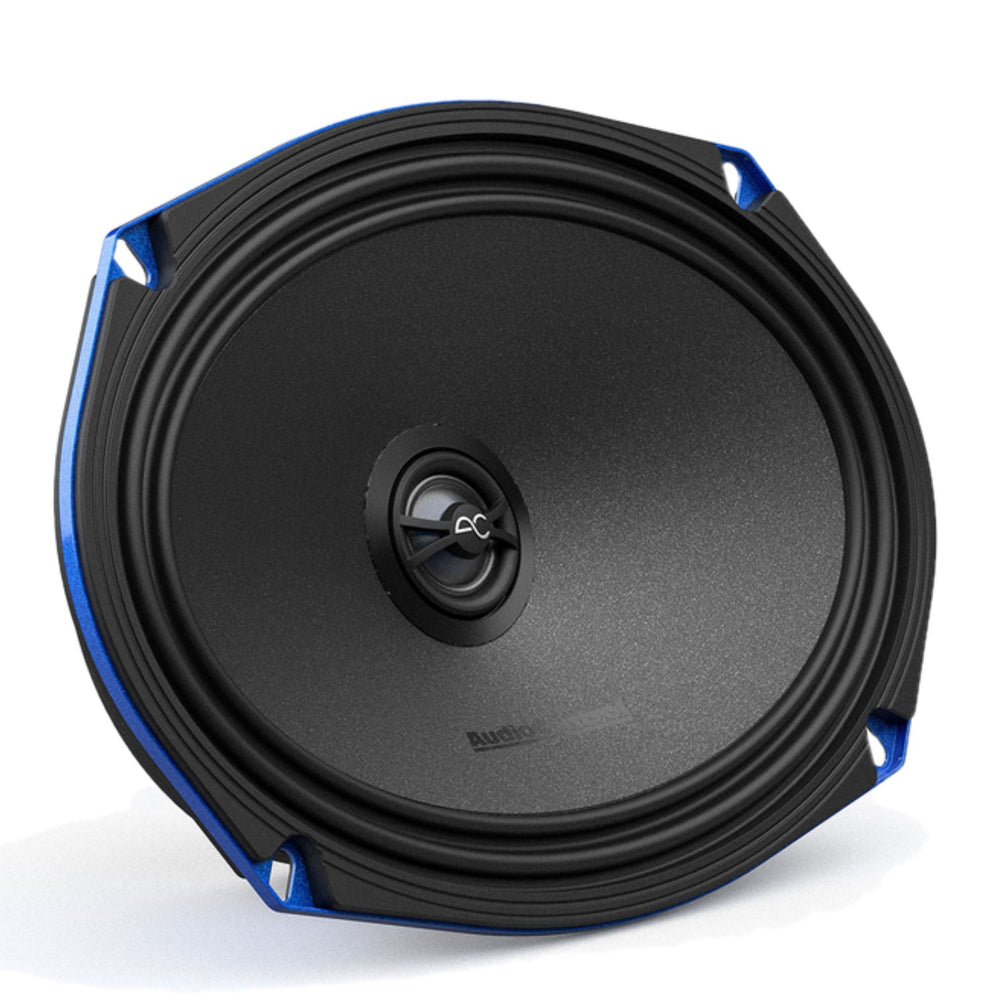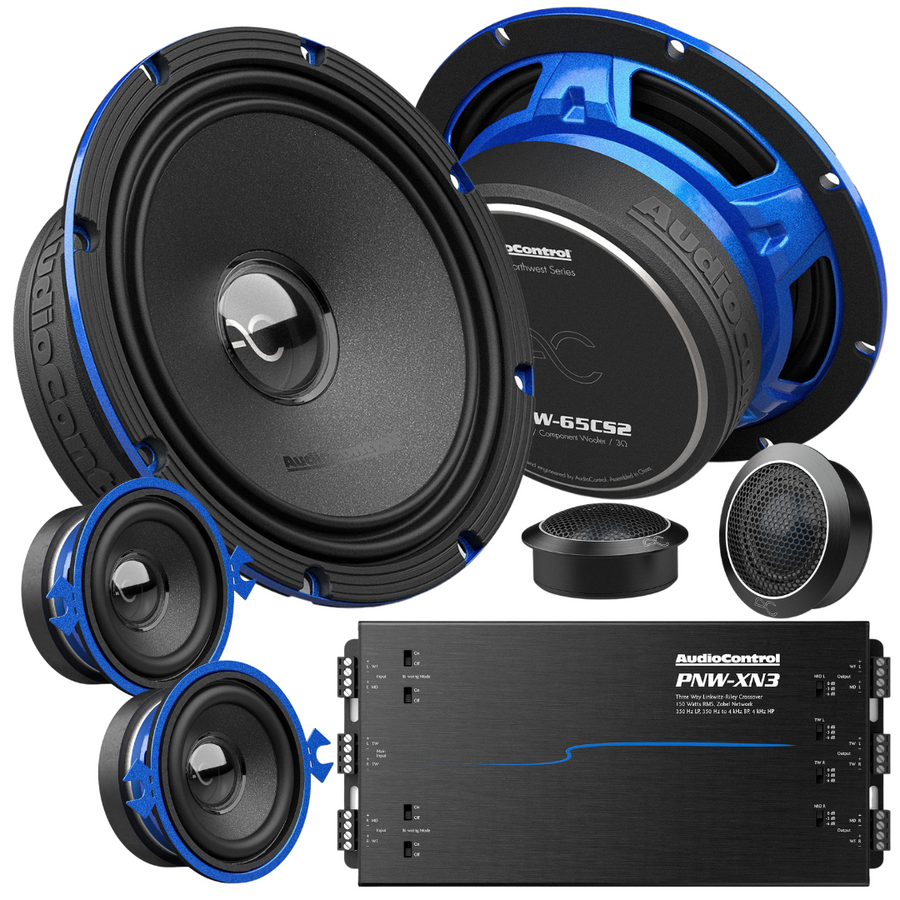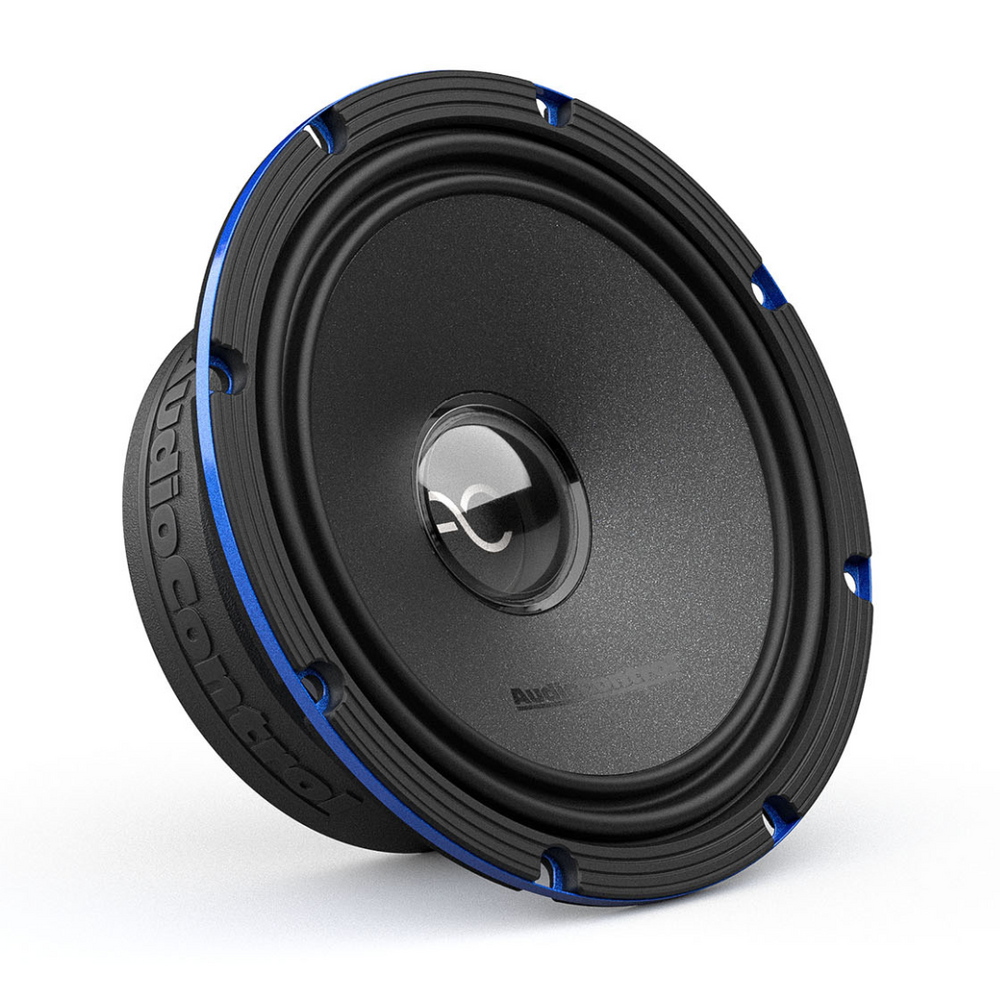Compatible with:
- PNW-65CS2
- PNW-69CS2
- PNW-275
- 2nd Order Linkwitz-Riley Crossover Slope with Zobel Networks
- 350 Hz LP (PNW-65/PNW-69), 350 Hz to 4 kHz BP (PNW-275), 4 kHz HP (PNW-1)
- 150 Watts RMS
- Crossover Type: 2nd order Linkwitz-Riley
- Filter Type: HP / BP / LP
- XO Frequency: 350Hz LP / 350-4k BP / 4K HP
- Slope (Octave): -12 dB
- Power Handling (RMS/Max): 150 Watts / 200 Watts
- Attenuation (Tw / Md): 0 / -3 / -6 dB
- Recommended Speaker Set 1: PNW-65CS2 + PNW-275
- Recommended Speaker Set 2: PNW-69CS2 + PNW-275
- Length: 10.6 in / 270 mm
- Width: 5.12 in / 130 mm
- Height: 1.13 in / 28.6 mm

Crossover Talk
Right on! You got yourself a shiny new AudioControl crossover. After you are done admiring the quality workmanship and attention to detail, you need to get this bad-boy installed. If you did not attend auto-shop in school or are having trouble plugging in power tools, your best bet is to seek out a qualified AudioControl dealer. They have the skills, experience, and specialized tools to get your vehicle sounding like a live concert and they usually smell alright too.
Crossover
The second-order Linkwitz-Riley filter is a type of crossover network that has several benefits compared to other types of crossover networks.
First, the second-order Linkwitz-Riley filter has a steep slope of -12dB per octave, which ensures that there is a sharp cutoff between the frequencies that are directed to the woofer and the tweeter. This steep slope helps to minimize overlap between the frequencies, resulting in better sound quality and improved power handling capability of the speakers.
Second, the second-order Linkwitz-Riley filter maintains a flat frequency response in the crossover region, which ensures that there are no peaks or dips in the frequency response that can result in uneven sound quality.
Lastly, the second-order Linkwitz-Riley filter has a phase response that is linear across the crossover region. This means that the phase shift between the woofer and tweeter is constant, resulting in improved imaging and soundstage.
Overall, the benefits of the second-order Linkwitz-Riley filter include a steep slope, flat frequency response, and linear phase response, resulting in improved sound quality, better power handling, and improved imaging and soundstage compared to other types of crossover networks.
System Talk
In an audio system, a crossover network is used to split the incoming audio signal into different frequency ranges and send each range to the appropriate speaker or driver. The two main types of crossover networks are passive and active crossovers. The PNW-XN3 is a passive crossover.
Passive Crossover:
A passive crossover is a simple electronic circuit that uses passive components such as resistors, capacitors, and inductors to split the audio signal into different frequency ranges. The passive crossover is placed between the amplifier and the speaker and splits the signal into high, mid, and lowfrequency ranges. Passive crossovers main advantages are they don't require any additional power source since they work with the signal from the amplifier. However, passive crossovers have some disadvantages such as signal loss, distortion, and inefficiency compared to the active crossover.
Bi-Wiring Talk
Bi-Wiring Talk Cont.
Crossover bi-wiring is a commonly found feature in high-end audio systems, particularly in crossover networks. It involves using separate input cables to connect the amplifier to the high-frequency (HF) and low-frequency (LF) sections of a crossover network, instead of using a single cable for both sections.
In a typical setup, a single set of cables connects the amplifier to the crossover network's input terminals. These terminals are then connected to the crossover network's internal components, which separate the audio signal into different frequency ranges and direct them to the appropriate drivers (woofers, tweeters, or mid-range drivers) within the system.
The main purpose of crossover bi-wiring is to utilize the amplifier's output resources independently for each speaker channel. This minimizes interference or interaction between the HF and LF signals within the crossover network, enabling full control of each channel's input level through separate input signals. It also reduces potential electrical crosstalk and impedance interactions between the HF and LF sections, resulting in improved sound quality and performance of the crossover network.
In a typical setup with a 2-channel amplifier and non-bi-wiring configuration, PNW-XN3 also incorporates an attenuation feature using L-Pad network which allows precise control of the volume level without affecting the speaker's impedance into each TW (tweeter) and MD (mid-range) channel of the crossover network. This feature allows for individual control of signal levels in the HF and MF sections and resulting in improved sound quality and better Attenuation refers to the adjustment or reduction of signal strength. By incorporating an attenuation feature into each channel of the crossover network, it becomes possible to independently adjust the output levels of the HF and MF sections. This is useful for fine-tuning the balance and overall sound reproduction of the system according to personal preferences or cabin acoustics. overall performance of the speaker system.
With individual attenuation controls, it is possible to decrease or increase the signal level of each channel. For example, if the HF section is overly dominant, its output can be attenuated to achieve the desired balance. Similarly, if there is a desire to enhance the MD response or emphasize the HF section, the MD section can be attenuated while keeping the HF section at a higher level.
The inclusion of the attenuation feature in each channel of the crossover network allows for more precise adjustments and customization of the audio output. It provides greater control over the tonal balance and enables sound tailoring according to personal preferences or specific requirements of the listening environment.
Shipping Policy
DBs Car Audio is proud to offer fast & free shipping on all items listed in our store!!
Shipping Methods and Transit Times
DBs Car Audio ships orders from our Saint Cloud, Florida location. On occasion, orders will be fulfilled directly by the manufacturer or distributor in order to reduce the shipping time..
Order Tracking
Once an order has been shipped, we send our customers an email with the tracking number for the order. Click on the tracking link in the email to follow the location of the package on the carrier's website. If you did not receive a tracking number by email or need to confirm the tracking information, please contact call us at 1-800-927-9390
Signature Required
Due to the valuable contents of some shipments, DBs Car Audio will only require a signature upon delivery if the order is over $500. Such guidelines will not be overruled upon the customer's request. Please understand that this is a security measure taken by our Company to ensure the safe delivery of each package and guarantee excellent service. Many of our third-party shipping carriers and payment companies require signatures upon delivery to protect against fraud and theft. Customers may request a signature upon delivery by emailing us at dbscaraudiofl@gmail.com.
Shipping Policy Disclaimer
Delivery estimates do not apply to items shipped directly from the manufacturer, nor out-of-stock items. Some items that ship from the manufacturer can only be delivered to addresses within the 48 continental states.
Standard delivery time for domestic customers will average from 2-4 business days, but can take longer in some cases. Saturday, Sunday and national holidays are not considered business days for delivery purposes.
Our Shipping Guarantee applies only to shipments delayed due to our service failure. We will not guarantee shipments that are delayed due to an act of god (ex: weather), a catastrophic event, or failure by our delivery partners. Our guarantee is also voided if incorrect billing or shipping information is given and results in your order being delayed to its destination. Our guarantee is also void if no one is available to sign for shipment when delivery attempt is made if a signature is required.


